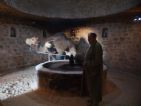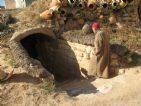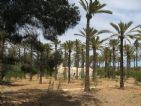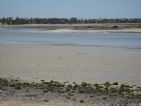
General part: Crops at Djerba
16/05/2012 0:08:35
Hi there from Sfax!!
Just like every year we will devote some of the blogs to the “general part”. The Archduke used to distinguish between the special part, landscapes, and the general part, information by themes. Concretely today we will talk about the crops at Djerba.
Nowadays most of the people do not want to work in agriculture-related Jobs. Some work in tourism-related activities, and many others have to emigrate to other parts of the country, France or other countries.

The whole island is covered with olive trees, inside the island and right besides the coast. There are around 1.500.000 olive trees in Djerba, and from 20 different varieties. There are still around 15 olive oil production sites and 12 modern ones. Almost all the production is sold outside the island.
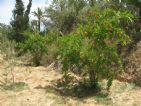
According to Kamel the palm trees were in the past used in many different ways: to construct doors, home roofs, as fuel for ovens, as food (for instance it was usual to have dates with goat milk for breakfast), etc. Today the palm tree Wood is only used for the stables, and also for the extraction of “Lagme”.
The “lagme”, as the Archduke already mentioned, is a drink that is extracted from the base of the branches. Those are cut, and some incisions are made in the tree. A liquid comes out little by litlle. Also from the dates a liquor is also produced.
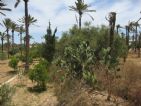
From the prickly pears people used to get the fruit (the prickly pear is known as the “president” of the fruits in the island), also the large blades of the plants were given to the dromedaries in the years of drought (this is still done nowadays). Aloe is a medicinal plant with very good properties for the skin. Our guide says that he is not aware of any ash production from it as the Archduke mentioned. Agave is used to make rope.

The beach situated to the south side of the lighthouse is protected. You can find a small laguna with herons and waders (we managed to take pictures of a Platalea leucorodia),
just besides a little port dedicated to the capture of shrimp. The original name of the Laguna is “Esseguia”. The tides are significant in this area, every 6 hours there is a change. When the tide was low we were able to observe some jellyfish (Pelagia noctiluca) that remained on the sand.
Best wishes!!








